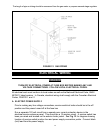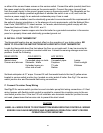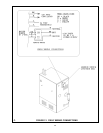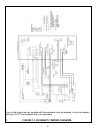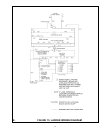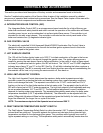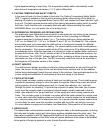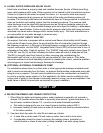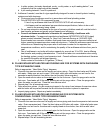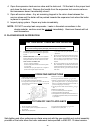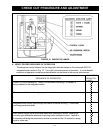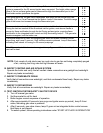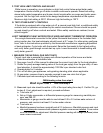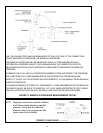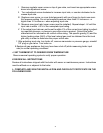
c. In older system, obviously discolored, murky, or dirty water, or a pH reading below 7, are
indications that the system should be cleaned.
d. A pH reading between 7 and 8 is preferred.
3. Antifreeze if needed, must be of a type specifically designed for use in closed hydronic heating
systems and with aluminum.
a. Choice and use of antifreeze must be in accordance with local plumbing codes.
b Only INTERCOOL NFP-50 is approved for use.
Use of any antifreeze other than INTERCOOL NFP-50 will void warranty.
Antifreeze must be maintained per manufacturers specifications, failure to do so will
result in the warranty being voided.
c. Do not use automotive antifreeze as the type of corrosion inhibitors used will coat the boilers
heat transfer surfaces and greatly reduce capacity and efficiency.
d. Consult antifreeze manufacturers literature for compatibility of antifreeze with
aluminum boiler. For approved manufactured antifreeze (INTERCOOL NFP-50 Coolant)
please contact Interstate Chemical Co. New York Customer Service at 1-800-422-2436.
Some brands have corrosion inhibitors that break down more rapidly or become ineffective at
higher operating temperatures when used with aluminum. Follow the antifreeze manufacturers
instructions on determining the proper ratio of antifreeze to water for the expected low
temperature conditions, and for maintaining the quality of the antifreeze solutions from year to
year.
e. Use of antifreeze in any boiler will reduce capacity by as much as 10 to 20%, due to differing
heat transfer and pumping characteristics. This must be taken into consideration when sizing
the heating system, pump(s), and expansion tank. Consult antifreeze manufacturers literature
for specific information on reduced capacity.
f. Water content of the boiler is 2.6 gallons. (10 liters)
B. FILLING BOILER WITH WATER AND PURGING ARE FOR SYSTEMS WITH DIAPHRAGM
TYPE EXPANSION TANKS.
Refer to appropriate Near Boiler Piping diagrams.
1. Close all zone service valves on the supply and return piping. Open the feed valve and fill boiler
with water. Make sure air vent is open. Hold relief valve open until water runs air free for five
seconds to rapidly bleed air from boiler, then let the relief valve snap shut.
2. Open the zone service valve on the supply pipe for the first zone. Open the purge valve on the
first zone. Feed water will fill the zone, pushing air out the purge valve. Close the purge valve
when the water runs air free. Close the zone service valve.
3. Repeat step 2 for all remaining zones.
4. Open all service valves. Any air remaining trapped in the return lines between the service valves
and the boiler will be pushed towards the air vent when the boiler is placed in operation.
5. Inspect piping system. Repair any leaks immediately.
C. FILLING BOILER WITH WATER AND PURGING AIR FOR SYSTEMS WITH
CONVENTIONAL CLOSED TYPE EXPANSION TANKS
Refer to appropriate Near Boiler Piping diagrams.
1. Close all zone service valves on the supply and return piping and close the expansion tank service
valve. Drain expansion tank. Open the feed valve and fill boiler with water. Hold relief valve open
until water runs air free for five seconds to rapidly bleed air from boiler, then let the relief valve
snap shut.
2. Open the zone service valve on the supply pipe for the first zone. Open the purge valve on the
first zone. Feed water will fill the zone, pushing air out the purge valve. Close the purge valve
when the water runs air free. Close the zone service valve.
3. Repeat step 2 for all remaining zones.
35



